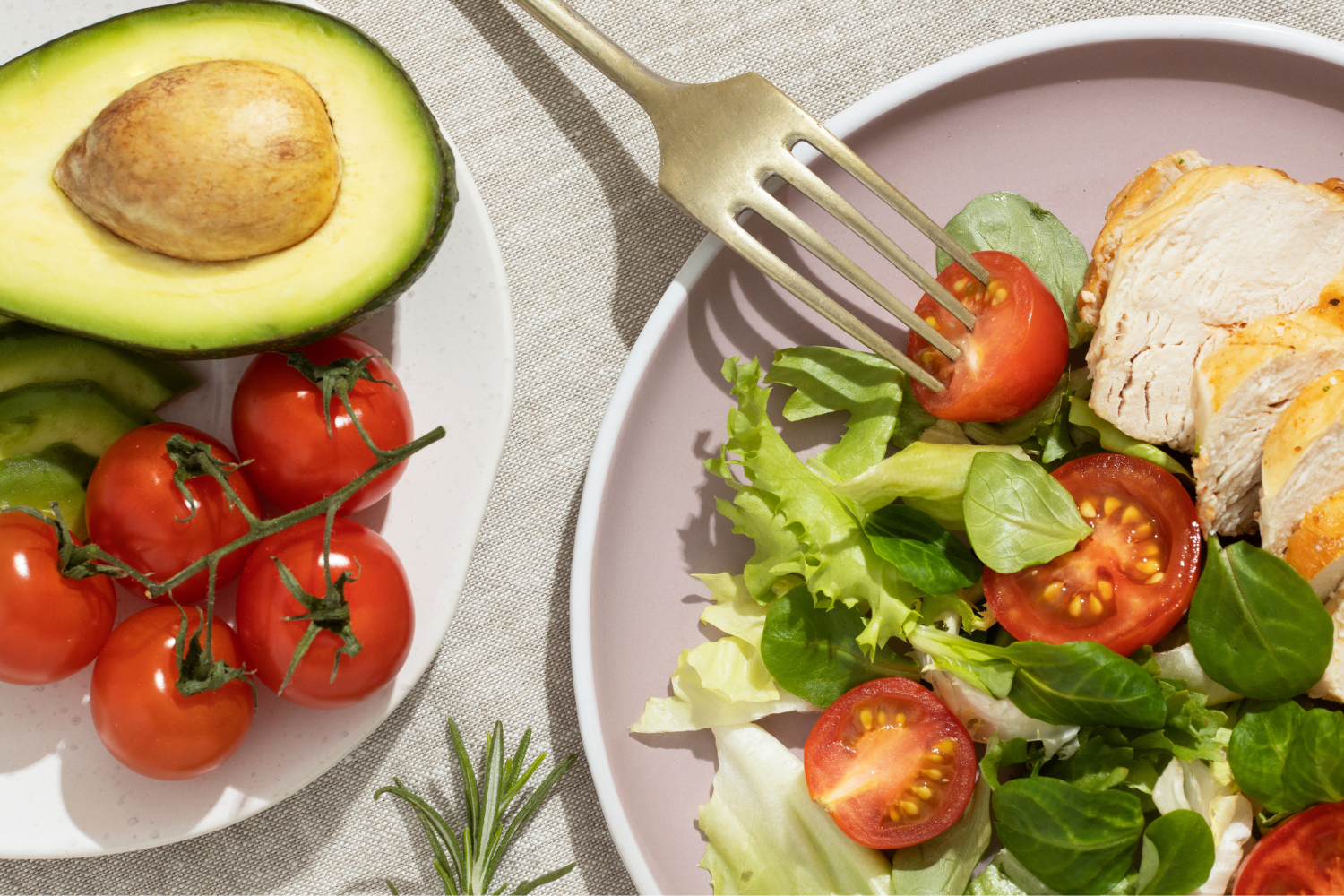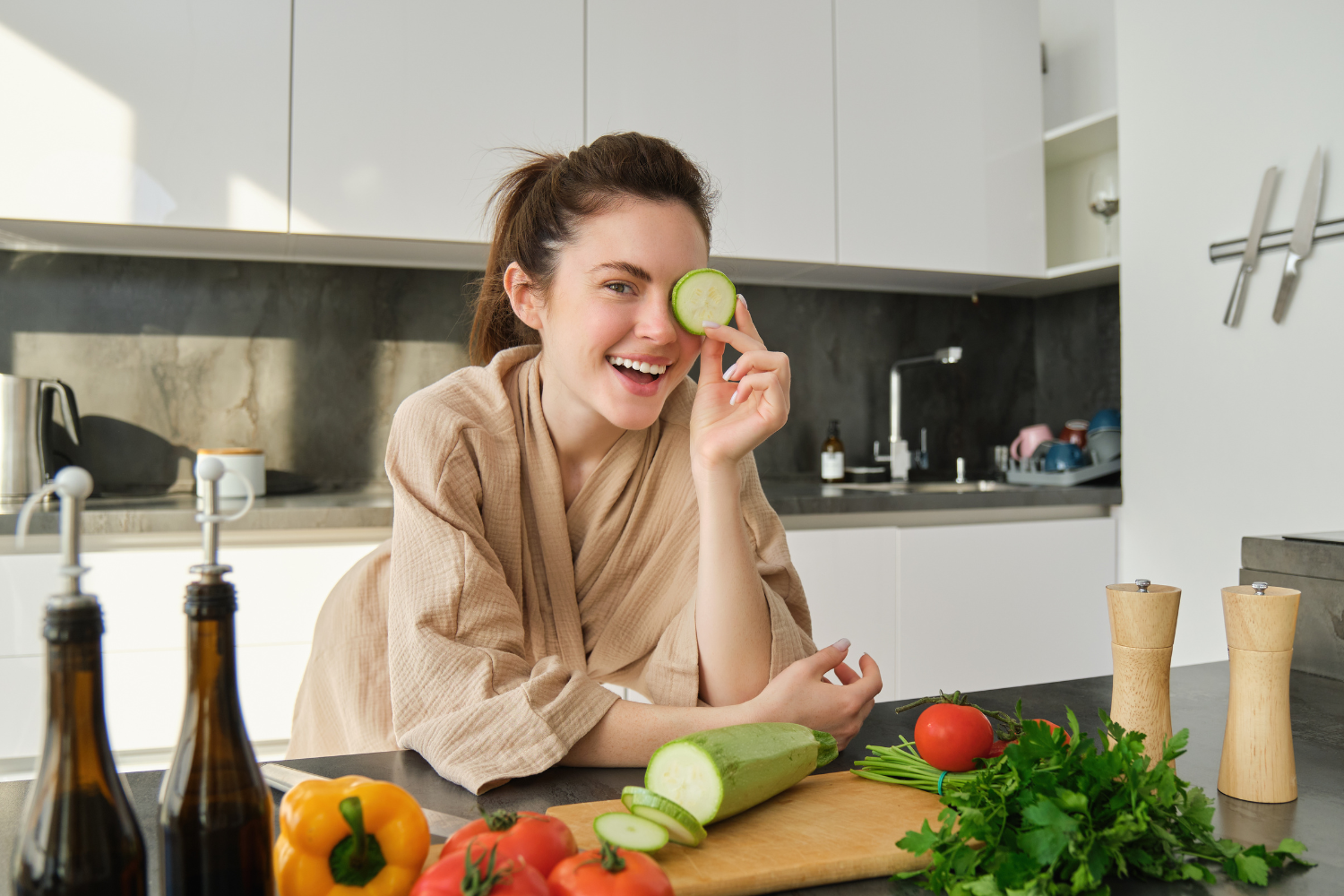Five Things You Should Eat for Your Skin
Even when you’re silent, your skin tells a story. It subtly reflects how you treat your body, what you feed it, and how well you care for your health. Sure, skincare products may do some of the hard lifting, but honestly, they just contribute to the picture. Start with what’s on your plate if you really want inside-out skin that glistens.
Eating the right foods for healthy skin can do more than any expensive cream ever will. And no, this doesn’t mean going on a strict diet or buying weird powders from a wellness influencer. It means adding skin-loving foods every day that actually nourish you. Let’s talk about five that truly make a difference.
Foods for Healthy Skin: Top 5 Picks
Like your body’s outer shield, your skin needs good food, which is like armour, hydration, and a little shine all at once. These five food groups are supported by science and have been proven to work; they are not merely a fashionable trend.
1. Fermented foods for skin: the gut-skin connection
Your gut might not be the first thing you think of when talking about breakouts or dryness, but here’s the wild truth: the bacteria in your belly can actually change how your skin looks and behaves.
Fermented foods, such as plain yogurt, kimchi, kefir, sauerkraut, and miso, are rich in live bacteria known as probiotics. These friendly bacteria help balance your gut microbiome, which in turn reduces inflammation throughout your body, including the kind that manifests as redness, irritation, or acne.
Try adding kimchi to a rice bowl or savouring a small glass of kefir with breakfast. Even a few tablespoons a day can gradually improve your gut health and skin. It’s not magic, but it’s close.
2. Healthy fats for skin barrier: moisturize from within
People claim avocados are nature’s butter for a reason. They are rich in healthy fats, which significantly support your skin’s ability to retain moisture. Still, they are not the only ones drawing weight in here.
Consider foods like fatty fish, such as salmon, and healthy fats like walnuts, olive oil, and flaxseeds. These are all high in omega-3 fatty acids, which support the skin’s outer layer, also called the lipid barrier. This barrier acts like a wall, keeping hydration in and pollutants out.
If your skin feels dry or tight all the time, chances are your barrier needs some love. A handful of walnuts or a drizzle of olive oil on your salad won’t fix everything overnight, but it’s a powerful step in the right direction.
3. Reduce sugar aging skin: the sweet saboteur
Sugar tastes amazing, no doubt. But too much of it? That’s where things go sideways. When sugar builds up in the bloodstream, it attaches to collagen and elastin, two proteins that keep your skin firm and bouncy. This process, called glycation, weakens them, making skin look dull, saggy, or wrinkled way earlier than it should.
This doesn’t mean you need to swear off dessert forever, but it’s worth checking labels and thinking about swaps. Pick the fruit over candy more often. Try cinnamon in your coffee instead of flavoured syrup.
Even small changes like these can help reduce sugar-induced skin aging and keep things plump for longer.

4. Alcohol and skin aging: limit the wine time
No judgment if you love a glass of wine at the end of the day. However, regular drinking can take a toll on your skin, and not in a good way.
Alcohol dehydrates your entire body, starting with your skin. It dilates blood vessels, increases inflammation, and, in some cases, triggers conditions such as rosacea. Over time, it can contribute to puffiness, dryness, and that uneven tone you just can’t cover up with makeup.
You don’t have to cut it out completely, but paying attention helps. Aim for a few alcohol-free days per week; drink water between cocktails, and look for low-sugar alternatives like a white wine spritzer or vodka with soda and lime. It’s not guilt; rather, it’s about balance.
5. A balanced diet for radiant skin: overall synergy
Imagine your skin like a garden. You wouldn’t just water it and expect a bloom. You’d need sun, soil, nutrients, and care. That’s what a balanced diet for radiant skin looks like: a variety of foods that give your body everything it needs to work properly.
This means loading your plate with colour: leafy greens, berries, lean proteins, legumes, whole grains, and a splash of healthy fats. All those vitamins, including A, C, E, and zinc, support cell turnover, collagen production, and overall skin health, resulting in a radiant glow.
Try this for one day:
- Breakfast: Greek yogurt with berries and chia seeds
- Lunch: Quinoa salad with avocado, chickpeas, and a lemon-olive oil dressing
- Dinner: Grilled salmon with steamed broccoli and roasted sweet potatoes
- Snack: A handful of almonds or a piece of dark chocolate
It’s simple but powerful. Real food, no extremes, and your skin will thank you in a few weeks.
A Closer Look at Why These 5 Matter
You may wonder if these foods truly make such a significant difference. The short answer? Absolutely.
Let’s break down what each one brings to the table:
|
Food Group |
What It Helps |
Key Nutrients |
|
Fermented Foods |
Inflammation, breakouts |
Probiotics, lactic acid |
|
Healthy Fats |
Moisture, elasticity |
Omega-3s, Vitamin E |
|
Lower Sugar |
Collagen, glow |
Reduces glycation |
|
Less Alcohol |
Redness, dullness |
Less dehydration |
|
Balanced Diet |
Cell repair, tone |
Vitamins A, C, E, zinc |
When combined, these foods do more than any single cream or serum. They create an internal environment where your skin can actually thrive, rather than constantly trying to recover from stress, dryness, or damage.

Practical Tips + Sample Meal Plan
You don’t need to overhaul your life to see changes. These small shifts can fit into real routines without stress:
- Start your day with probiotics: Try yogurt, kefir, or even a fermented supplement.
- Switch up your oils: Use extra-virgin olive oil instead of vegetable oil.
- Cut the sugar slowly: Replace soda with flavoured water or herbal tea.
- Pick your drinks wisely: Choose lighter, clear spirits over creamy cocktails.
- Balance your plate: Half veggies, a quarter protein, a quarter complex carbs, and a splash of healthy fat.
Here’s a quick plan to get you started:
|
Meal |
Idea |
|
Breakfast |
Kefir smoothie with berries and flaxseed |
|
Lunch |
Avocado toast with egg and side greens |
|
Dinner |
Baked trout with quinoa and sautéed kale |
|
Snack |
Yogurt and walnuts, or cucumber with hummus |
Stick with it for two weeks and take a selfie now to compare later. That alone will show you the difference.
Conclusion
At the end of the day, real skin care starts with your fork. No fancy serum can undo what a diet full of processed junk can do over time. By focusing on simple foods for healthy skin, you’re not just nourishing your face; you’re also providing your entire system with what it needs to repair, hydrate, and glow.
Fermented foods, healthy fats, sugar control, reduced alcohol consumption, and a balanced plate all work together to support a healthy lifestyle. You don’t have to be perfect. Just consistent. And honestly? That’s more than enough to let your natural glow shine through.


